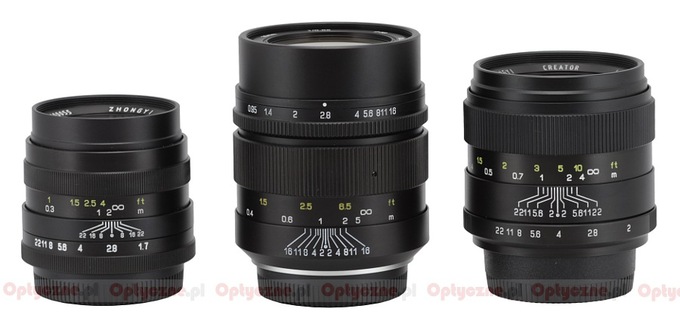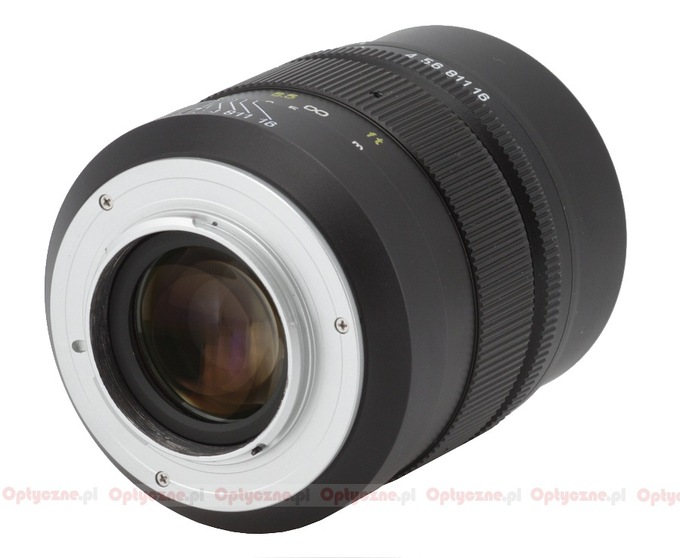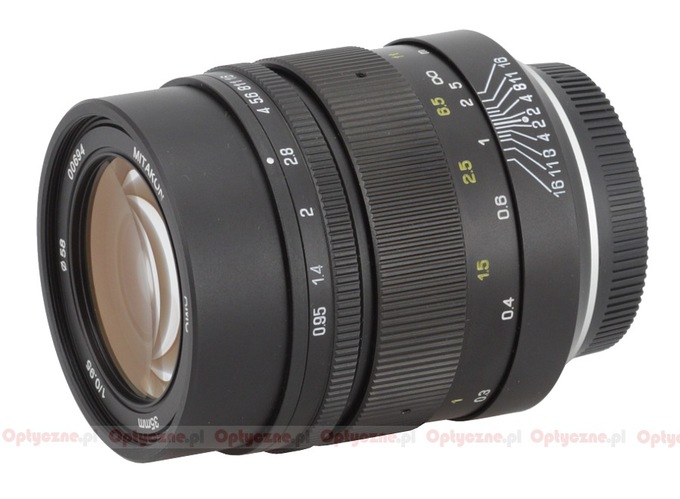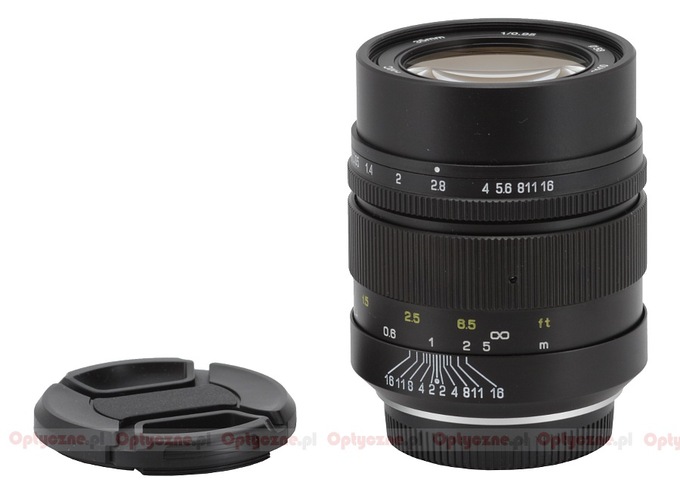Mitakon Speedmaster 35 mm f/0.95
3. Build quality
In the photo below the tested lens is positioned next to other Mitakons: the 1.7/24 and the Creator 2/35 which have been already tested by us.
 |
Please Support UsIf you enjoy our reviews and articles, and you want us to continue our work please, support our website by donating through PayPal. The funds are going to be used for paying our editorial team, renting servers, and equipping our testing studio; only that way we will be able to continue providing you interesting content for free. |
- - - - - - - - - - - - - - - - - - - - - - - - - - - - - - - - - - - - - - - - - - - - - - - -
The lens starts with a metal mount without any contacts so the camera body won’t get any information about settings. A rear element of the lens is 28 mm in diameter and it is positioned on the same level as the mount when you set the focus at infinity. As you pass to the minimum focusing distance the whole element system shifts and hides about 0.5 cm deep inside the casing. Unfortunately we have a lot of reservations concerning the appearance of the area around the rear element. It seems in the factory where the Mitakons are produced probably nobody’s heard about such a thing as blackening the inner tube; that or they’ve run out of black, matt paint. The interior of the lens is not blackened at all and the element is surrounded by a thread which in places glitters with a reflected light from fresh aluminum parts…We don’t hesitate to call it a botched job and it might influence the performance against bright light of the tested lens.
 |
The body of the lens is produced completely of metal and makes a very solid and positive impression. It starts with an immobile ring on which you can find a depth of field scale ranging from f/16 to f/2.0. In a case of a manual device it is a very useful tool.
The next part is a manual focus ring, about 28 mm wide. Metal ribs take more than half of it and below you see a distance scale expressed in feet and meters. The ring moves smoothly and is well-damped; however its working range amounts to only 120 degrees – it is definitely too narrow for a fast manual lens of good quality. Let’s remind here that in the case of both Voigtlanders that value reached 270-280 degrees.
 |
Further on you see an aperture ring. The producer definitely tries to make film-makers happy - that ring moves smoothly, without any steps. It turns with a lot of resistance but actually it is more asset than a liability - it can’t be moved by accident and it is a joy to use. You go through the full aperture range turning it through an angle of over 90 degrees. With such a smooth work of the ring the proper position of the aperture markings are crucial – they are the only thing that will guide you and inform what aperture you are using, especially that the information isn’t sent to a camera body. Unfortunately here the producer botched the things up once again – we’ll describe it in more detail in the next chapter.
The front element of the lens is huge, with a diameter of as much as 42 mm. It is surrounded by an inscription stating the name, basic parameters of the lens and its serial number, along with a non-rotating filter thread, 58 mm in diameter. The producer didn’t add any hood mount; you could imagine a threaded hood but then there wouldn’t be any possibility of using filters and the hood at the same time.
When it comes to the optical construction you deal here with 10 elements positioned in 7 groups. The producer claims that there are as many as 6 elements made of low dispersion ED glass. That number is impressive but unfortunately we haven’t managed to find any diagram showing the inner design of the lens. We can only add that the aperture has as many as 10 diaphragm blades and you can close it down to f/16 at the maximum. In fact you deal here with two apertures. The first, a bigger one, works until the area near f/5.6-8.0. Its blades are too big to make the entrance pupil circular for higher values so before f/8.0 appears a second, smaller aperture. As a result a more circular aperture is attainable at its higher values and near the maximum relative aperture the entrance pupil is no longer so round.
 |
Buyers get both caps and a soft pouch in the box.






